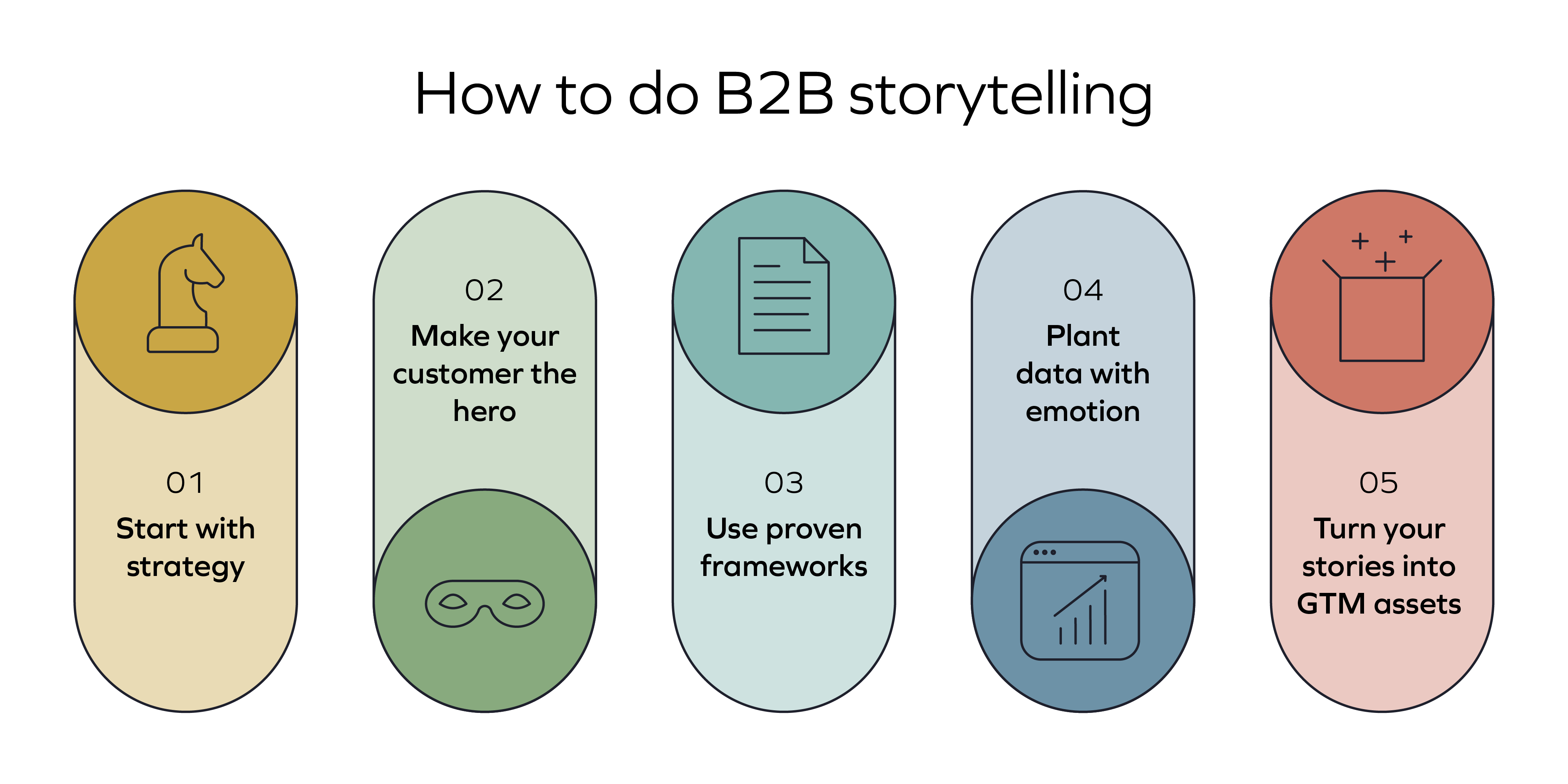How to do B2B storytelling: A GTM agency’s guide to content that converts
3rd July 2025 •
3rd July 2025 •

In a world where B2B buyers are bombarded with content, storytelling isn’t just a nice-to-have – it’s a strategic differentiator. At our B2B go-to-market (GTM) agency Torpedo, we’ve seen how the right narrative can transform a brand from forgettable to unforgettable. But what does effective B2B storytelling actually look like? And how do you make it work for your business?
Let’s break it down.
Storytelling humanises your brand, builds trust, and simplifies complexity. According to Edelman’s 2025 Trust Barometer, trust now ranks equally with price and quality in purchase decisions. And McKinsey’s 2023 research shows that emotionally resonant content can accelerate B2B buying cycles by up to 20%.
In short: data informs, but emotion drives action.
Before you write a single word, ask: what’s the goal?
Storytelling is positioning in motion. Without a clear objective, even the best-crafted narrative will miss the mark.
Every great story starts with the audience. Build a ‘story persona’ alongside your buyer persona. Understand:
This will ensure your story lands where it matters most.

Too many brands cast themselves as the protagonist. But in B2B, your customer should be the hero.
Tell stories that show:
Instead of saying, “We’re the best,” say, “Here’s how a RevOps leader cut churn by 30% in 90 days.”
Here’s a simple structure we use across formats:
Use this for case studies, landing pages, and video scripts.
B2B buyers are people first. They need the numbers – ROI, time to value – but they also respond to emotional triggers: relief, confidence, pride.
McKinsey’s research on generative AI adoption shows that tools that combine emotional resonance with clear business value are 2x more likely to be adopted.
So bring both: the hard data and the human story.
Authenticity wins. Use:
Founder story tip: Share how your product came to life. Was it born from a frustrating inefficiency? A late-night prototype? A customer insight that changed everything?
These behind-the-scenes moments build emotional connection and credibility.
One strong story can fuel an entire campaign. Turn it into:
Think modular. Build once, deploy everywhere.
Your best stories often live outside the marketing team. Collaborate with:
Create a shared ‘story library’ that your entire GTM team can access.
Storytelling isn’t fluff – it’s a growth lever. Track:
Tie every story to a business outcome. That’s how you earn budget – and belief.
Markets shift. Personas evolve. Your stories should too.
Schedule regular audits:
Make storytelling a living part of your GTM rhythm.

Don’t forget the stories inside your walls. Culture stories – like how your team rallied to launch a product in record time, or how a junior developer’s idea became a flagship feature – can be just as powerful as customer stories.
And purpose-driven narratives? They’re not just for B2C. Edelman’s research shows that B2B buyers are 4x more likely to purchase from brands that take a stand on issues they care about.
So tell the story of your mission. Why you exist. Who you’re here to help. And how your team lives that purpose every day.
At our GTM agency, we’ve seen how storytelling can do more than attract attention – it builds belief. It earns trust. It drives growth. If you’re looking to stand out in a crowded market, start with a story worth telling.
And if you’re not sure where to begin? That’s where we come in.
Q: What’s the difference between storytelling and a case study?
A: A case study is a format. Storytelling is a technique. The best case studies use storytelling to make the content more compelling and memorable.
Q: Can B2B stories work for technical audiences?
A: Absolutely. Even technical buyers respond to emotive narratives that deliver on clarity, context, and outcomes – just tailor the tone and detail.
Q: What types of stories perform best?
A: We find that customer success stories, founder origin stories, product innovation journeys, and purpose-driven narratives tied to industry trends are all great ideas to explore.

Let’s chat. We’ll help you craft stories that don’t attract a captive audience – they sell.
Get in touch